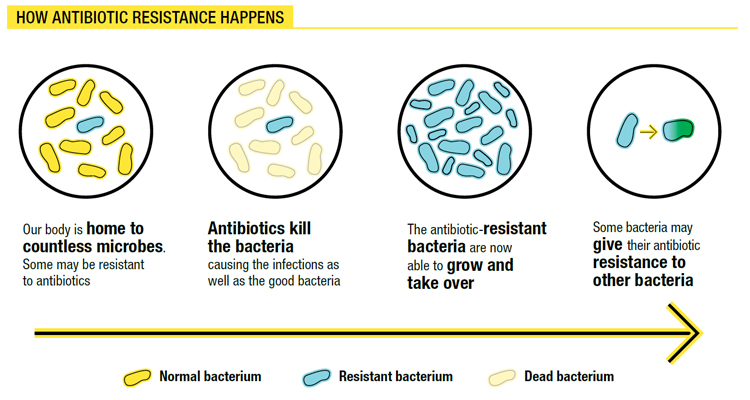There are many approaches to help slow the development and transmission of antimicrobial resistance. The four main intervention pillars identified in this website are:
Antimicrobial resistance (AMR) is an evolutionary defence mechanism that occurs naturally in microbes. It is the microbes that become resistant to the drugs – not people or animals – but our human actions can influence the speed at which resistance develops.
One of the main drivers of AMR is the misuse and overuse of antimicrobials. As shown in the diagram below, antibiotics (a type of antimicrobial drug) kill both good and bad bacteria in humans and animals, leaving the drug-resistant bacteria a huge advantage to multiply and grow.


